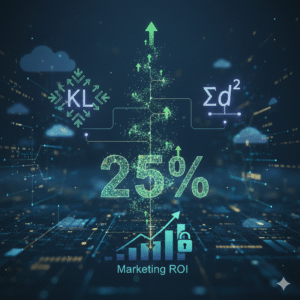Managing projects effectively is crucial for ensuring that tasks are completed on time, within budget, and to the required quality standards. Various project management methodologies have been developed to suit different types of projects and organizational needs. This guide will cover some of the most popular project management methodologies, with detailed examples and visual diagrams to enhance your understanding.
1. Waterfall Model 🌊
Definition
The Waterfall Model is a linear and sequential approach where each phase must be completed before the next phase begins. This model is straightforward and easy to understand but can be rigid and less flexible.
Example
Consider a software development project for a new banking application. The project might follow these phases:
- Requirements Analysis: Gathering all the requirements from the stakeholders.
- System Design: Designing the system architecture based on the gathered requirements.
- Implementation: Writing the code and converting the design into a working system.
- Testing: Testing the system to identify and fix any defects.
- Deployment: Releasing the system to the users.
- Maintenance: Performing ongoing maintenance and updates as needed.
Pros and Cons
Pros
- Simple and easy to understand.
- Well-documented phases.
- Good for projects with clear, fixed requirements.
Cons:
- Inflexible to changes.
- Testing phase comes late in the process.
- Not suitable for complex, evolving projects.
2. Agile Methodology 🏃♂️
Definition
Agile is an iterative and incremental approach that emphasizes flexibility, collaboration, and customer satisfaction. It allows for frequent reassessment and adaptation of plans.
Example
A team developing a mobile app might use Agile to break the project into smaller, manageable chunks called sprints. Each sprint focuses on delivering a potentially shippable product increment, allowing the team to adapt to changes quickly.
Pros and Cons
Pros
- Highly flexible and adaptable to changes.
- Encourages customer involvement and feedback.
- Frequent delivery of working software.
Cons:
- Can be difficult to predict timelines and costs.
- Requires a high level of collaboration.
- May lack documentation.
3. Spiral Model 🌀
Definition
The Spiral Model combines iterative development with systematic aspects of the Waterfall Model. It emphasizes risk assessment and minimization.
Example
Developing a new e-commerce platform might involve using the Spiral Model to iteratively refine and expand the system, starting with a small prototype and gradually adding more features.
Pros and Cons
Pros
- Emphasizes risk management.
- Allows for iterative refinement.
- Suitable for large, complex projects.
Cons:
- Can be expensive and time-consuming.
- Requires expertise in risk assessment.
- Complex management.
4. V-Model (Verification and Validation) ✔️
Definition
The V-Model is an extension of the Waterfall Model that emphasizes verification and validation at each stage of development. It is a highly disciplined model where each phase is completed sequentially.
Example
In a medical device project, the V-Model ensures that for every phase of development, there is a corresponding testing phase, ensuring thorough validation of each component.
Pros and Cons
Pros
- High level of discipline.
- Clear verification and validation phases.
- Well-suited for critical projects.
Cons:
- Inflexible to changes.
- High reliance on initial requirements.
- Costly and time-consuming.
5. Iterative Model 🔄
Definition
The Iterative Model focuses on refining the system through repeated cycles (iterations) rather than a single pass through the phases.
Example
A team developing a complex simulation system might use the Iterative Model to build and refine the system through multiple iterations, improving functionality and performance with each cycle.
Pros and Cons
Pros
- Allows for early detection of issues.
- Continuous feedback and improvement.
- Flexible to changes.
Cons:
- Requires effective planning and management.
- Can be resource-intensive.
- Risk of scope creep.
6. Incremental Model 🧱
Definition
The Incremental Model divides the system into smaller parts (increments), each of which is developed and tested independently. Each increment adds functionality to the system.
Example
Developing a new CRM system might involve creating the core customer management features first and then incrementally adding features like sales tracking, customer support, and marketing automation.
Pros and Cons
Pros
- Delivers working software early and often.
- Easy to manage and track progress.
- Flexible to changes.
Cons:
- Requires good planning and design.
- Integration can be challenging.
- May lead to uneven quality across increments.
7. Big Bang Model 💥
Definition
The Big Bang Model involves developing the entire system in one go, with little to no planning or design. It is a high-risk approach often used for small projects or research.
Example
A startup developing an MVP (Minimum Viable Product) might use the Big Bang Model to quickly bring their product to market, accepting the risks involved.
Pros and Cons
Pros
- Simple and straightforward.
- Minimal planning required.
- Quick results for small projects.
Cons:
- High risk of failure.
- Poorly structured and unmanageable.
- Not suitable for large projects.
8. Rapid Application Development (RAD) 🚀
Definition
RAD focuses on quickly developing prototypes and getting user feedback to refine the system. It emphasizes rapid iterations and adaptability.
Example
A company developing a new web application might use RAD to create a series of prototypes, gather user feedback, and iteratively improve the application.
Pros and Cons
Pros
- Rapid delivery of working software.
- High user involvement.
- Flexible and adaptable.
Cons:
- Requires highly skilled developers.
- May lack scalability.
- Risk of poor design quality.
Conclusion: Project management methodologies
Understanding different project management methodologies allows you to choose the best approach for your specific project needs. Each methodology has its strengths and weaknesses, and the right choice depends on the project’s complexity, risk, and flexibility requirements. Whether you’re developing a new software application, launching a product, or managing a complex project, knowing these methodologies will help you plan, execute, and deliver successful projects.


















